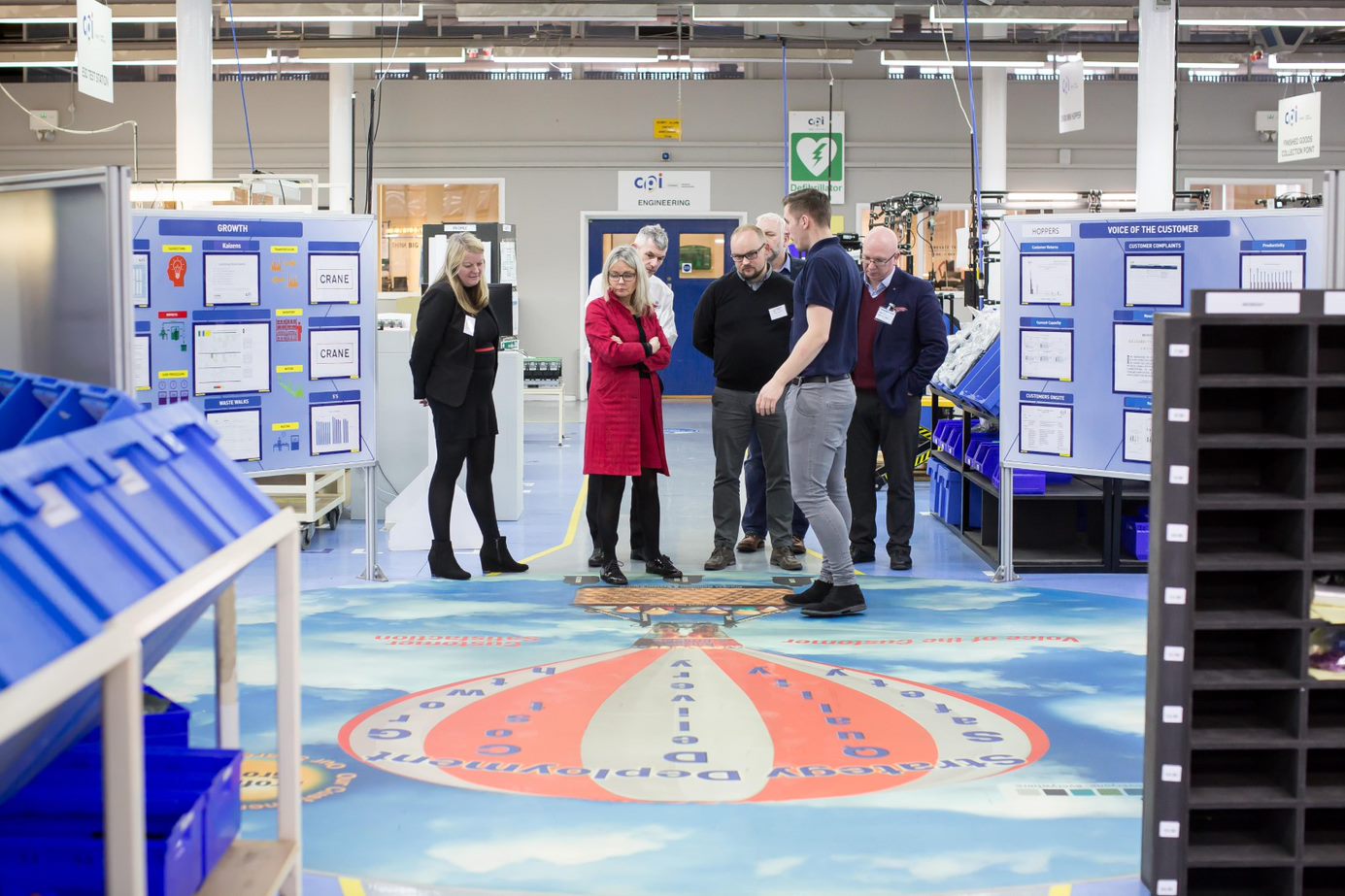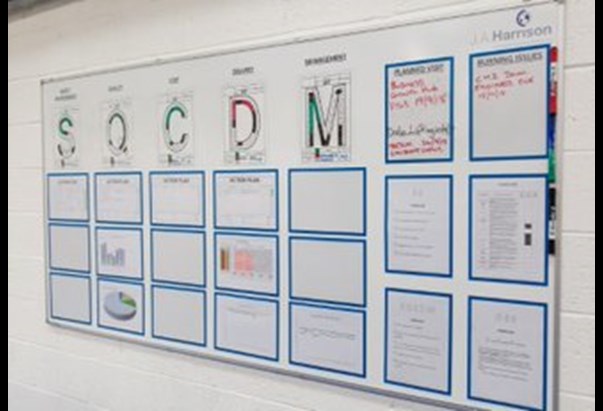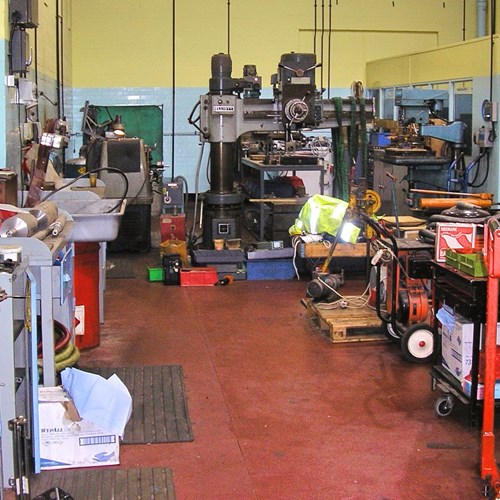What are the characteristics of an excellent manufacturing business?
10 June 2019
Achieving productivity and profitability is the ultimate goal for any manufacturing business. Those that do tend to have similarities in managing their operation. Nick Brandwood, Specialist Manufacturing Advisor at the Hub considers the businesses that he has worked with and the common traits that lead to Manufacturing Excellence.
As a Manufacturing Advisor I have had the opportunity to visit lots of manufacturing companies. Of course, some of them get by despite themselves, but many are excellent and demonstrate that British manufacturing is a match for any in the world.
These excellent companies exist across all manufacturing industries and the stories of what drove them to their respective states of excellence are all different. However, on my travels I have noticed traits that are common to these companies; traits that almost preempt excellence.
Stability and adherence to the production schedule
Good companies generate a time bound production schedule while some companies just produce a job list. The distinction is that a production schedule is a hypothesis regarding your process predictability and is key to continuous improvement. All continuous improvement comes from the gap analysis between what you think can be achieved-theory and what was achieved-actual. The gap reflects the uncertainty in your processes - where you are out of control - and signposts the opportunities to improve.
There are two common approaches.
1) Avoid the problem. Don’t issue a production schedule because it is constantly having to be updated-live with the lack of control and unpredictability.
2) Seize the learning opportunity. Measure actual performance against the production schedule, understand the gaps and the reasons for plan changes and take the opportunity to improve. No schedule? No learning.
If you only measure one thing, measure how often you change the schedule. The measure of schedule stability is affected by all the potential causes of uncertainty in the business, if you are changing the schedule you are doing so because of capacity issues, machine breakdowns, quality problems, people issues, stock inaccuracies, supplier unreliability or customer reliability. In short, the less changes you make, the more you are in control.

Visual Management at CPI in Oldham is used to keep the workforce informed of the production schedule
Top tip
Track the changes on a weekly basis, identify the reasons for the changes and the root causes. Then implement actions to tackle those root causes and increase the stability of the plan. Our factsheet on Process Management can help you with this.

Gary Knight at Wheatley Plastics reviewing performance against target with the team in Stockport
Measuring Performance against target
In my experience, companies that review their monthly performance against target perform better than those that don’t. Those that do it weekly and daily perform better and better again. You can probably see where this is going – companies that breakdown the production schedule into hourly targets, review performance and take actions to bridge the shortfall tend to be operationally excellent. They can scrutinise issues in real time and respond rapidly, furthermore, they can verify the data in real time ensuring the quality of information is better, as is the quality of the resultant problem solving.
Top tip
Start small - set one or two targets to measure in one area over one month and see if this works for you. Our factsheet on KPIs and Performance Management can help you do this.
Daily shopfloor reviews
If there is one thing that suggests I am in the presence of excellence, it is seeing white boards on the shopfloor containing hand written daily performance measures. The previous section had regular measures against target as a prerequisite of entry into the club of excellence, however, you are still not coming in without a daily mechanism of reviewing that information with the people.
It’s always interesting when I ask the boss “how do they know if they’ve had a good day or a bad day?” Quite often the answer is subjective and doesn’t relate to the performance of the business. I like the term “good day? bad day?” to describe these reviews and to reinforce objectivity– the objective being the achievement of daily targets for Safety, Quality, Cost and Delivery (SQCD), did we hit our targets? If not –what are the actions? If so –what are the learning points?
The daily review is a powerful way of engaging the people and creating a commonality of purpose around SQCD at the start of the day.
Excellent companies are visual companies too! Good days are green and bad days are red and will always generate an action with the aim of turning the board green. With just 10 minutes around the board, the team agree new actions and you can ensure that completed actions have moved you towards the target condition. When writing remedial actions excellent companies define a target condition-“What does good look like?” and verify that the completed action has moved you towards that target condition.

JA Harrison’s visual management board checks SQCD at their factory in Rochdale
Top tip
If you meet every day don’t write actions that will take a month. If it will take a month to achieve the target condition, capture what has to be achieved in the next 24 hours to move you along that path to the target condition. Refer to our factsheet on visual management to help you set up a visual board.
There are 3 separate ingredients here in my recipe for excellence, they are very much linked and are all parts of being a learning organization, which for me is the phrase that best sums up Manufacturing Excellence.
1. Have a production schedule that reflects your understanding of the process and what is achievable
2. Measure performance against that target…measure as close to real time as you can. This accelerates any necessary remedial action and also ensures more verified data that is worthy of subsequent analysis and action.
3. Engage your workforce through the Good Day Bad Day Review, create a consensus about the right things to do and the priority actions to take to achieve the target condition.
Access a range of resources and factsheets to help you here. You can also sign up for our monthly newsletter to be the first to hear the latest manufacturing news.
Find out how the GC Business Growth Hub can help you to improve efficiency, develop new products and increase productivity.
You may also like...
 The Big Question
The Big Question
How to improve productivity in your business?
Read more Blog
Blog
My factory is full – get me out of here!
Read more Fully-funded support
Fully-funded support